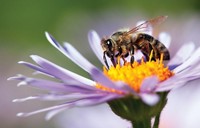Advertisement
Grab your lab coat. Let's get started
Welcome!
Welcome!
Create an account below to get 6 C&EN articles per month, receive newsletters and more - all free.
It seems this is your first time logging in online. Please enter the following information to continue.
As an ACS member you automatically get access to this site. All we need is few more details to create your reading experience.
Not you? Sign in with a different account.
Not you? Sign in with a different account.
ERROR 1
ERROR 1
ERROR 2
ERROR 2
ERROR 2
ERROR 2
ERROR 2
Password and Confirm password must match.
If you have an ACS member number, please enter it here so we can link this account to your membership. (optional)
ERROR 2
ACS values your privacy. By submitting your information, you are gaining access to C&EN and subscribing to our weekly newsletter. We use the information you provide to make your reading experience better, and we will never sell your data to third party members.
Analytical Chemistry
Newscripts
The Birds and the Bees
by This week's column was written by Rachel Petkewich. Please send comments and suggestions to newscripts@acs.org.
April 9, 2007
| A version of this story appeared in
Volume 85, Issue 15
Pigeons
The HOMING PIGEON must scoff at human dependence on global positioning systems. After all, these birds have had them for years—and they don't need fancy satellites.
So how do homing pigeons actually find their way home? Several theories are up in the air; however, researchers in Germany who recently published a paper in the journal Naturwissenschaften call the birds "biological magnetometers." More specifically, the researchers found that the skin on either side of the pigeons' tiny beaks is riddled with iron-containing nerves and bilateral, dendritic fields that have three-dimensional orientation. The researchers used microsynchrotron X-ray absorption near-edge structure spectroscopy to nail down the compound's composition: 90% maghemite and 10% magnetite.
Here's the gist of the researchers' proposed "homing" mechanism: The maghemite and magnetite bullets near the beak fall perpendicular to Earth's magnetic field and trigger "strain-sensitive membrane channels" that can separately sense all three vector components of Earth's magnetic field. Moreover, the researchers think the homing systems in the skin of the upper beak might be a universal feature of all avians.
The researchers haven't got it all figured out yet, but their colleagues suspect the birds' retinas may work like a compass, although it is unknown how the two systems cooperate. No word on whether birds should stay away from metal detectors when flying these days.
Owls

The magazine New Scientist recently reported more high-flying research studies. Dale Joachim and colleagues at Massachusetts Institute of Technology's Media Lab are calling OWLS on cell phones.
According to the website owlproject.media.mit.edu, "The goal of this work is to explore how we can use technology to augment our understanding of bird populations in order to allow these populations to speak to us about their habitat."
The researchers conducted a pilot project in Connecticut last summer to demonstrate that cell phones are a better technology than other conventional recording equipment. Now, the MIT researchers are teaming up with Maine Audubon to expand the conservation project to include 64 phones. The information will help monitor changes to population and habitat. Sounds like a hoot to Newscripts.
Bees
To a bee, the buzz is not just silly gossip. The difference between "buzz" and "BZZZZ" can distinguish between life and death. Apparently, BEES make different noises when they are exposed to toxic chemicals.
Researchers at the University of Montana have been studying for several years how bees can sniff out toxic agents and warn humans of terrorist attacks. A spin-off company called Bee Alert Technology is now interested in what bees have to say.
Bees normally emit sounds in the range of 200-400 Hz, but the amplitude spikes as soon as the critters are dosed with a poison. The tune also changes when disease strikes a hive.
Human ears can't pick up all of the frequencies bees emit, so the researchers turned to electronic recording. The first hurdle? Bees do not like to be recorded. Researchers didn't get much data when they stuffed conventional equipment into a hive—just lots of crashing as the bees tried to dislodge the mike and plug it up. After the researchers modified their gear, they developed software that translates bee noises into electronic signatures, which they correlated to chemical and disease effects on a hive. The audio technology can distinguish between species, too.
The researchers have also created "smart hives," which are decked out with electronics to monitor bees and analyze signals. And if the hive gets hit with a poison, a beekeeper can receive a message on a mobile phone. Beekeeping remains virtually the same as it has been for decades, so this is one of the bigger changes to come along, the researchers say.
This week's column was written by Rachel Petkewich. Please send comments and suggestions to newscripts@acs.org.





Join the conversation
Contact the reporter
Submit a Letter to the Editor for publication
Engage with us on Twitter